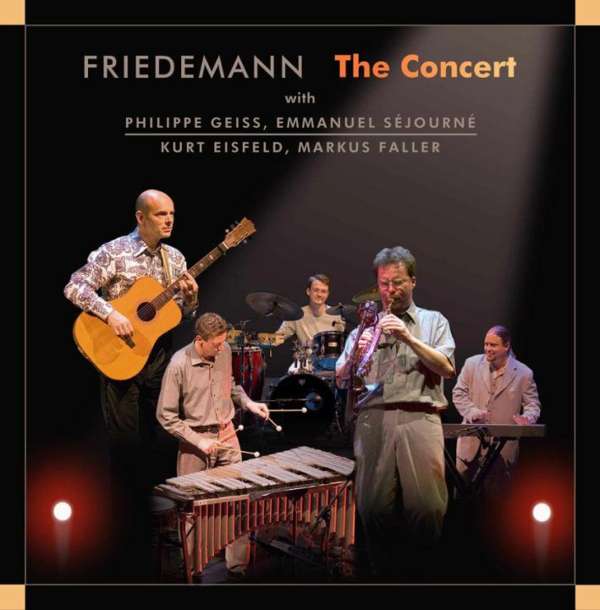In the article I referred ro previously, Bob Katz mentions some recordngs he worked on which provide a good sense of "depth and space":
 www.digido.com
www.digido.com
"Here are some examples of audiophile records I’ve recorded that purposely take advantage of depth and space, both foreground and background, on Chesky Records.
"Sara K. Hobo, Chesky. JD155. Check out the percussion on track 3, BrickHouse…"
Listen to the release Hobo by Sara K. on Qobuz https://open.qobuz.com/album/mwhggt39q5rbc
"Johnny Frigo, Debut of a Legend, Chesky JD119. Check out the sound of the drums and the sax on track 9, I Love Paris"
Listen to the release Debut of a Legend by Frigo Johnny on Qobuz https://open.qobuz.com/album/b9g6t4wm1qz4a
"Ana Caram, The Other Side of Jobim, Chesky JD73. Check out the percussion, cello and sax on Correnteza"
Listen to the release The Other Side Of Jobim by Ana Caram on Qobuz https://open.qobuz.com/album/kyxauwl59li5b
"Carlos Heredia, Gypsy Flamenco, Chesky WO126. Play it loud! And listen to track 1 for the sound of the background singers and handclaps"
Listen to the release Gypsy Flamenco by Carlos Heredia on Qobuz https://open.qobuz.com/album/c7e242anv7rrc
"Phil Woods, Astor and Elis, Chesky JD146, for the natural-sounding combination of intimacy and depth of the jazz ensemble."
Listen to the release Astor & Elis by Phil Woods on Qobuz https://open.qobuz.com/album/ptw0nyt4hpnic
---.
Some of the CDs he recommends on his site (see the link in the above article) are impressive. Check out this Laurie Anderson track, for example:
Listen to Bright Red by Laurie Anderson on Qobuz https://open.qobuz.com/track/14704425
"Bright Red - Laurie Anderson Mastered by Bob Ludwig. Engineered by Kevin Killen. Very clean and open with great dynamic range. Beautiful, clean, and clear digital sound. Very attractive."
Interestingly the AllMusic review included in Qobuz explains:

This is a perfect example of the difficulty of talking about "emotional impact", which is obviously such a personal appreciation. I really enjoy that song...
Check out this Dave Grusin album:
"The Gershwin Connection - Dave Grusin Mastered by Wally Traugott. Engineered by Ed Rak. This is a modern Jazz album with a Rock flavor, and recorded with some of the top names in Jazz. Fabulous impact, clean, warm, extremely pure sound, dynamic range, and stereo image. Try Fascinating Rhythm. May be from analog tape, if so it is truly excellent. Moderately compressed but still retains its transients."
Listen to Fascinating Rhythm by Dave Grusin on Qobuz https://open.qobuz.com/track/54293695
This album he mentions is very nice:
Listen to the release Meant To Be by Ramsey Lewis on Qobuz https://open.qobuz.com/album/0724385077456
Depth and Dimension - Digido.com
Digital Domain - we ensure musicians, independent artists and record labels get the best sound possible. Bob Katz provides the best in mastering and mixing.
"Here are some examples of audiophile records I’ve recorded that purposely take advantage of depth and space, both foreground and background, on Chesky Records.
"Sara K. Hobo, Chesky. JD155. Check out the percussion on track 3, BrickHouse…"
Listen to the release Hobo by Sara K. on Qobuz https://open.qobuz.com/album/mwhggt39q5rbc
"Johnny Frigo, Debut of a Legend, Chesky JD119. Check out the sound of the drums and the sax on track 9, I Love Paris"
Listen to the release Debut of a Legend by Frigo Johnny on Qobuz https://open.qobuz.com/album/b9g6t4wm1qz4a
"Ana Caram, The Other Side of Jobim, Chesky JD73. Check out the percussion, cello and sax on Correnteza"
Listen to the release The Other Side Of Jobim by Ana Caram on Qobuz https://open.qobuz.com/album/kyxauwl59li5b
"Carlos Heredia, Gypsy Flamenco, Chesky WO126. Play it loud! And listen to track 1 for the sound of the background singers and handclaps"
Listen to the release Gypsy Flamenco by Carlos Heredia on Qobuz https://open.qobuz.com/album/c7e242anv7rrc
"Phil Woods, Astor and Elis, Chesky JD146, for the natural-sounding combination of intimacy and depth of the jazz ensemble."
Listen to the release Astor & Elis by Phil Woods on Qobuz https://open.qobuz.com/album/ptw0nyt4hpnic
---.
Some of the CDs he recommends on his site (see the link in the above article) are impressive. Check out this Laurie Anderson track, for example:
Listen to Bright Red by Laurie Anderson on Qobuz https://open.qobuz.com/track/14704425
"Bright Red - Laurie Anderson Mastered by Bob Ludwig. Engineered by Kevin Killen. Very clean and open with great dynamic range. Beautiful, clean, and clear digital sound. Very attractive."
Interestingly the AllMusic review included in Qobuz explains:

This is a perfect example of the difficulty of talking about "emotional impact", which is obviously such a personal appreciation. I really enjoy that song...
Check out this Dave Grusin album:
"The Gershwin Connection - Dave Grusin Mastered by Wally Traugott. Engineered by Ed Rak. This is a modern Jazz album with a Rock flavor, and recorded with some of the top names in Jazz. Fabulous impact, clean, warm, extremely pure sound, dynamic range, and stereo image. Try Fascinating Rhythm. May be from analog tape, if so it is truly excellent. Moderately compressed but still retains its transients."
Listen to Fascinating Rhythm by Dave Grusin on Qobuz https://open.qobuz.com/track/54293695
This album he mentions is very nice:
Listen to the release Meant To Be by Ramsey Lewis on Qobuz https://open.qobuz.com/album/0724385077456
Last edited:







